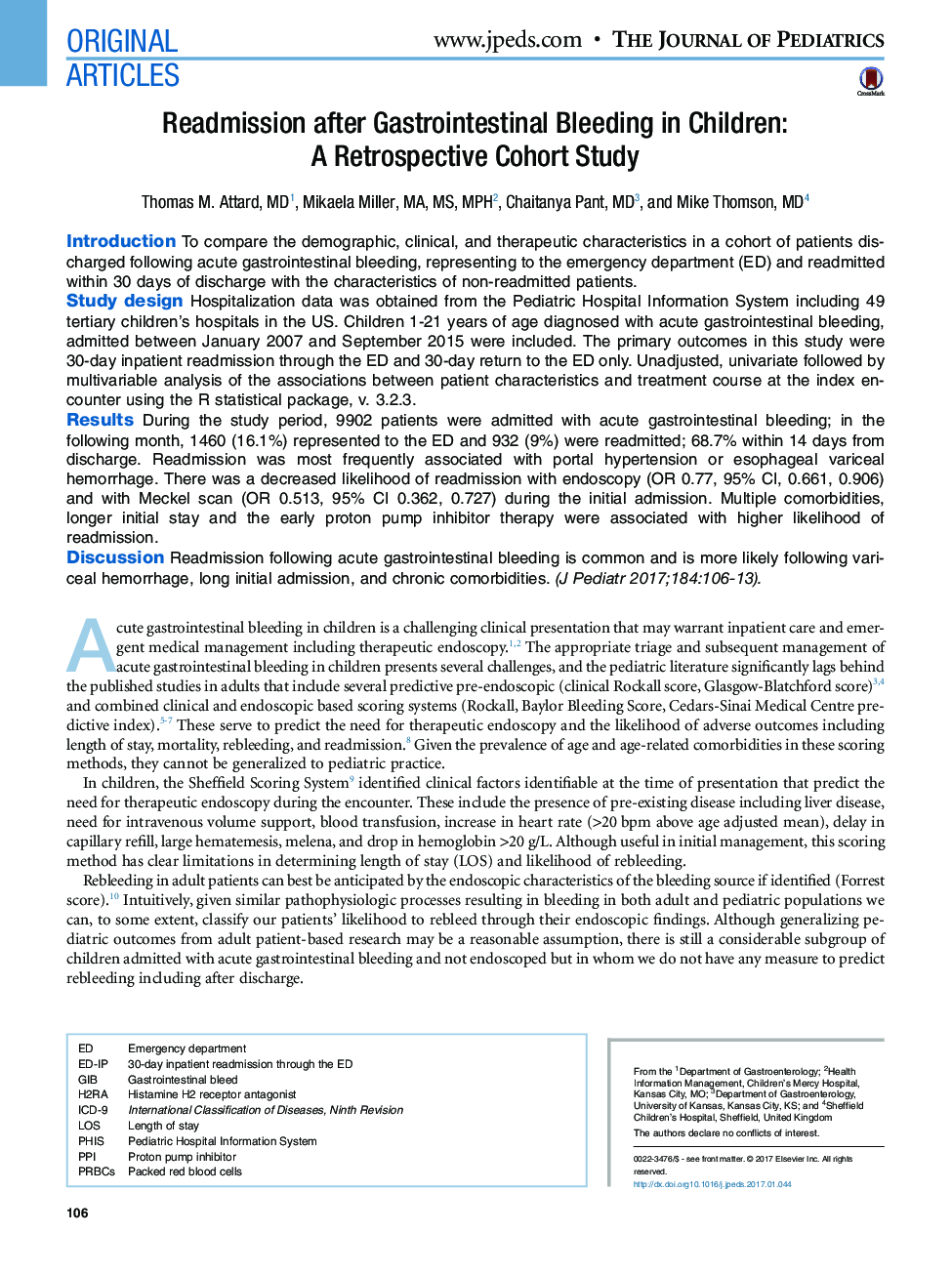| Article ID | Journal | Published Year | Pages | File Type |
|---|---|---|---|---|
| 5719588 | The Journal of Pediatrics | 2017 | 12 Pages |
IntroductionTo compare the demographic, clinical, and therapeutic characteristics in a cohort of patients discharged following acute gastrointestinal bleeding, representing to the emergency department (ED) and readmitted within 30 days of discharge with the characteristics of non-readmitted patients.Study designHospitalization data was obtained from the Pediatric Hospital Information System including 49 tertiary children's hospitals in the US. Children 1-21 years of age diagnosed with acute gastrointestinal bleeding, admitted between January 2007 and September 2015 were included. The primary outcomes in this study were 30-day inpatient readmission through the ED and 30-day return to the ED only. Unadjusted, univariate followed by multivariable analysis of the associations between patient characteristics and treatment course at the index encounter using the R statistical package, v. 3.2.3.ResultsDuring the study period, 9902 patients were admitted with acute gastrointestinal bleeding; in the following month, 1460 (16.1%) represented to the ED and 932 (9%) were readmitted; 68.7% within 14 days from discharge. Readmission was most frequently associated with portal hypertension or esophageal variceal hemorrhage. There was a decreased likelihood of readmission with endoscopy (OR 0.77, 95% CI, 0.661, 0.906) and with Meckel scan (OR 0.513, 95% CI 0.362, 0.727) during the initial admission. Multiple comorbidities, longer initial stay and the early proton pump inhibitor therapy were associated with higher likelihood of readmission.DiscussionReadmission following acute gastrointestinal bleeding is common and is more likely following variceal hemorrhage, long initial admission, and chronic comorbidities.
